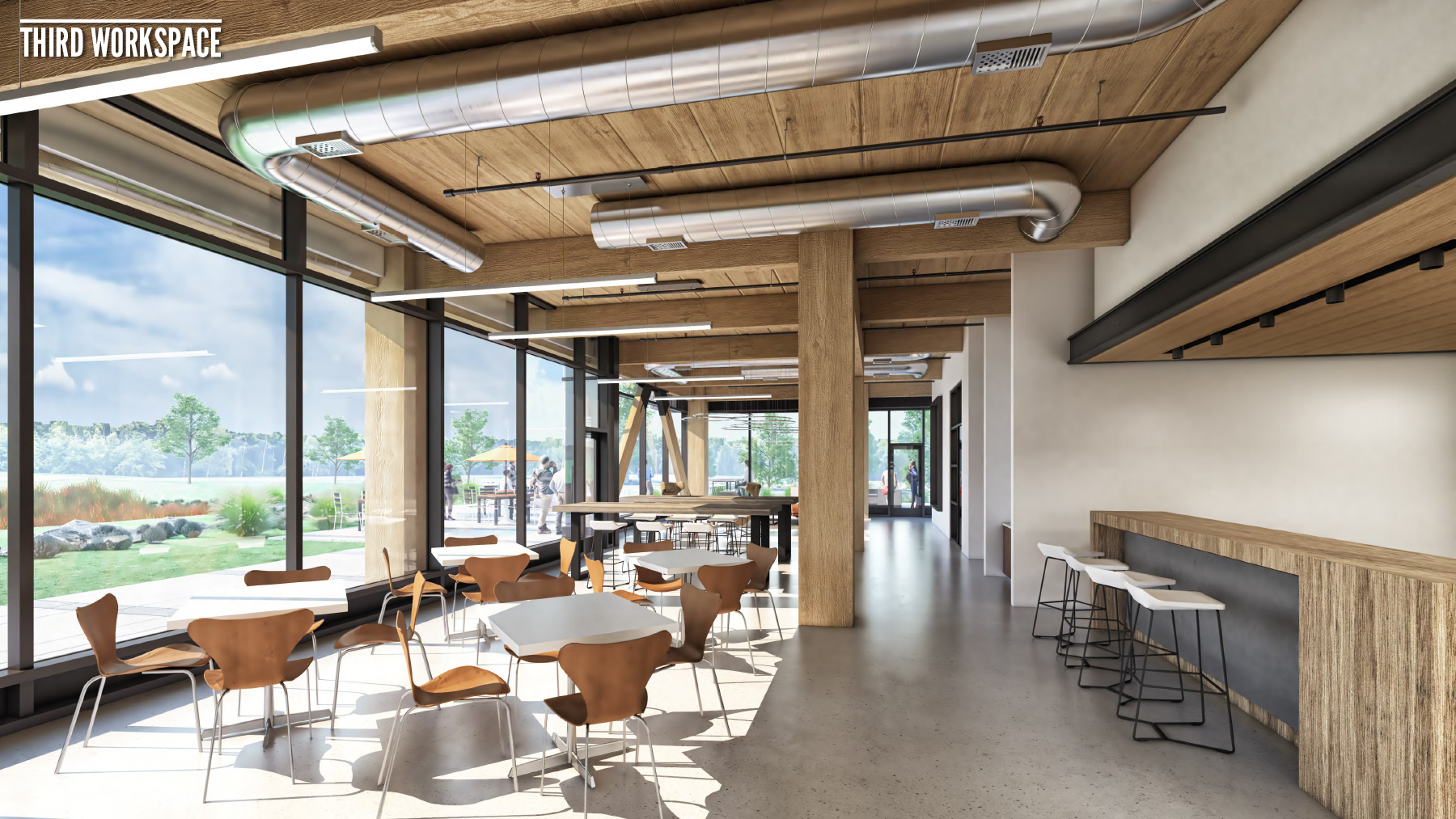
Mass Timber Seizes its Moment –
ESG in Corporate America
‘When we talk about the future of wood construction,’ Thomas Robinson said, ‘in many ways, we’re also talking about the future of forests.’ – Founder, Lever Architecture

Mass Timber
The family of products that encompass mass timber Cross-Laminated Timber (CLT) is increasingly becoming a viable construction alternative for the AEC industry. Timber has been a structural material for thousands of years, but these engineered wood products have broadened the field of options and provided a solid basis for architectural designers to work with, expanding upon their range of materials and finishes.
Mass timber construction has many benefits from quick and quiet prefabricated installation to a lower carbon footprint when made from sustainably sourced wood. One other benefit of a product like CLT is its overall strength to weight ratio, making it lighter than many materials but structurally as strong (for example, one cubic meter of CLT weighs 400 kg and one cubic meter of reinforced concrete weighs 2.7 tons). One American architect at the forefront of mass timber innovation is Thomas Robinson, a founder of LEVER Architecture.
Thomas Robinson has lectured across the US, Europe, and South America on the merits of Mass Timber, and LEVER has received over $1 million in grants to pursue research and testing. They have completed numerous mass timber projects.
Recent projects by LEVER include the Meyer Memorial Trust, a headquarters building that utilizes Mass Plywood panels. To Robinson, engineered timber is a tool that architects and construction professionals can use to produce more sustainable solutions.
Cross-laminated Timber in the Adidas North American Headquarters
The expansion of Adidas’s North American headquarters is one of the largest CLT projects in the US.

ESG in Corporate America
In recognition of today’s social and environmental responsibility concerns, one of the most important aspects of the 675 Mass Timber building is sustainability. Employees, investors, and customers care about and respect Environmental, Social and Governance (“ESG”). In 2020/21, purposeful companies, with better environmental, social, and governance (ESG)profiles, have outperformed their peers. Firms with a strong ESG program will gain credence among employees and customers, especially millennials who seek to do business with and work for responsible companies enjoying a “sustainability premium.”
CLT’s rising popularity with architects and developers has mirrored the growing weight of environmental, social and governance criteria in corporate America. Growing concerns about climate change have contributed to the exponential growth of ESG investing, placing pressure on corporate leaders to make business decisions that also benefit the environment. That has come with a sharpening focus on how much carbon buildings release in their daily operations, as well as their embodied carbon — that is, how much carbon was released into the environment during the construction of the building, including the creation of the materials.

More Info on Mass Timber
The following links provide additional information on Mass Timber construction
Mass Timber Seizes its Moment: The LEVER Architecture Experience
Manulife acquires US timberlands for carbon capture
The Pandemic and Soaring Lumber Costs Have Not Deterred Developers From Considering Mass Timber
Mass Timber Punches Above Its Weight In Reducing Buildings’ Embodied Carbon Footprint
Also, here are some websites of a few Mass Timber projects under construction in the U.S.
Platte 15 – Denver Mass Timber

Sustainability
When it comes to ensuring a more sustainable built environment, material choices matter. Wood is a naturally renewable material for building, with a lighter environmental footprint than steel or concrete. Increasing the use of mass timber products can play an important role in achieving ambitious eco-friendly design goals and low or even zero carbon construction. Timber stores carbon and, with the least embodied energy of all major building materials, it requires less energy from harvest to transport, manufacturing, installation, maintenance, and disposal or recycling. Harvesting and replanting increases forests’ carbon sink potential as the rate of sequestration is greater during young, vigorous growth. Active forest management, or forest thinning, mitigates wildfires, cuts carbon emissions, replenishes area waterways, expands wildlife habitat, and creates jobs in rural areas. Mass timber’s sustainability as a building material rests on the sustainability of our forest practices. North America has more certified forests than anywhere else in the world, a seal of approval based on the latest best practices. Forest management in the U.S. operates under federal, state, and local regulations to protect water quality, wildlife habitat, soil, and other natural resources. Modern forestry standards ensure a continuous cycle of growing, harvesting, and replanting. In fact, strong markets for wood products encourage forest owners to keep their lands as forests and invest in practices to keep trees healthy.
